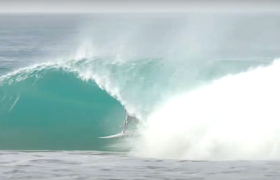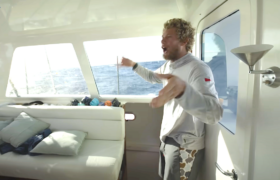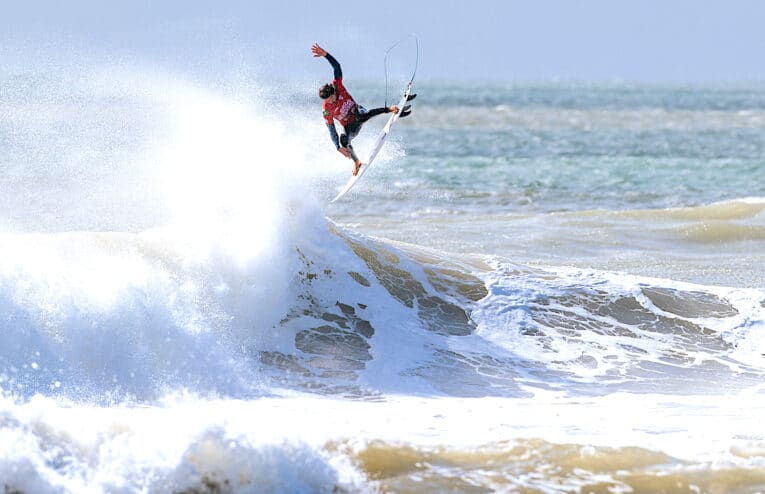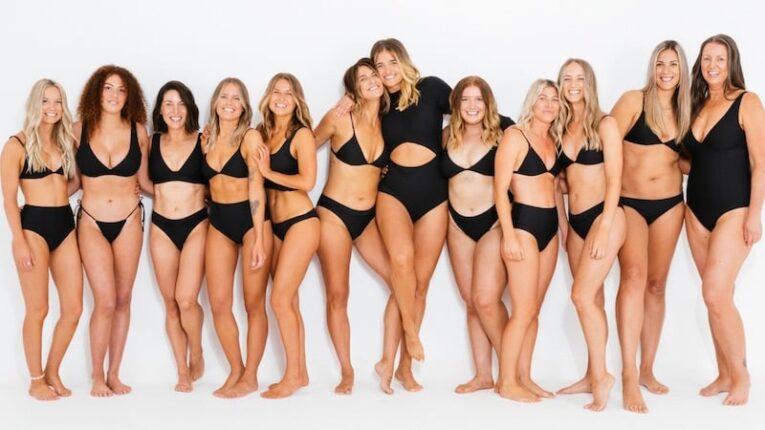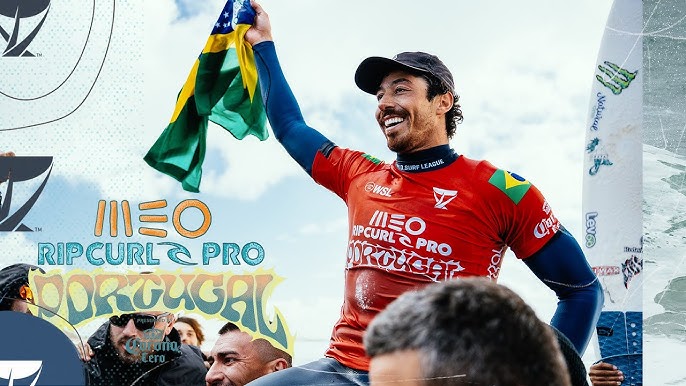Though it is notable how even on the worst days, the best surfers prevail.
Toughest event from a fan’s perspective in living memory? From your narrowed and tired Antipodean eyes, almost certainly.
Not to mention the blinkered views of the North American man, woman, they or them.
But tell it to the Euros on the sand, waving Italian flags in support of Leo Fioravanti. Tell it to Marco Mignot’s old man. Tell it to the ever-present, always voracious Brazilian fan, who enjoyed an all-country match-up in the final between Italo Ferreira and Yago Dora, at an event Brazil has historically dominated.
The truth is, waves or no, Portugal always brings the fans. It’s second only to Brazil in this regard, and that counts for something.
But yes, the waves were objectively garbage.
All day the head-on view into the glare made it look like surfing as imagined in a Cormac McCarthy novel. Wind-ripped tones of beige under leaden skies.
To make it worse, the storm that had blown over Peniche in the days prior had damaged some of the infrastructure, meaning that most of the heats shown on Finals Day were punctuated by momentary blackouts.
Worse still: the surfing on screen had no graphics, so no surfer names nor scores. The only way to follow the overlapping heats was to depend on Kaipo and Mitch et al. Not a position you want to be left in under any circumstances.
Just on the infrastructure: unless I’m misremembering this, the whole point of locating this competition in Peniche fifteen years ago was not just Supertubos, but the fact the peninsula was more or less agnostic to weather and offered so many set-ups.
Why do they now refuse to move? Why are they staunchly pitched in Supertubos sand when the waves are likely good elsewhere yet blown to shit in front of them?
My guess is that it’s simply a cost-cutting exercise. But it’s a false economy. Getting the competition completed in better waves and a shorter timeframe should always be the priority.
So I certainly won’t try and dress this as something it wasn’t. But between the glare, there were some moments.
The best two surfers of the competition met in the final. (See statistics to follow!) That in itself can be considered success.
Both Dora and Ferreira turned nothing waves into somethings. Few other surfers in the draw have this ability. This will change in years to come, when young surfers who’ve honed their craft on the air sections of wavepools will make similar closeouts look like something else.
Though it is notable how even on the worst days, the best surfers prevail. The semis, and to a lesser extent the quarters, were comprised of guys you’d want to watch on the best days.
View this post on Instagram
Italo Ferreira made gold glint in morning sun, spinning high and fast in spite of the tempestuous Atlantic closeouts. Yago Dora found impossible waves against Ethan Ewing in their semi final. The dynamism of Dora laying waste to Ewing’s unrealised beauty.
“He’s taking calculated risks, but not over-risking things either,” said Mitch Salazar of Dora, making little sense but not making much sense either.
It was notable that by the final, even Kaipo had tired of his co-anchor.
“The fans on the beach are very well-educated,” claimed Salazar after Yago Dora had landed a clean full rotation in the final. “They recognise when someone’s done something awesome.”
“Anytime you see someone flying in the air, Mitchell, anyone’s going to be impressed,” Guerrero chided.
But I suppose I should cut them some slack. This was a hard gig. The saccharine enthusiasm of children’s TV presenters can only stretch so far.
And since the WSL has such a kink for stats these days, allow me to end on a flourish with some statistical analysis of Finals Day.
From the quarter finals on:
110 waves were scored.
52 of these waves (or 47% if you prefer) were scored at one point or less.
Just 21 of these waves (19%) scored five points or more.
Italo Ferreira (6) and Yago Dora (9) accounted for 71% of these mid-to-high scoring waves.
Are you not entertained?
